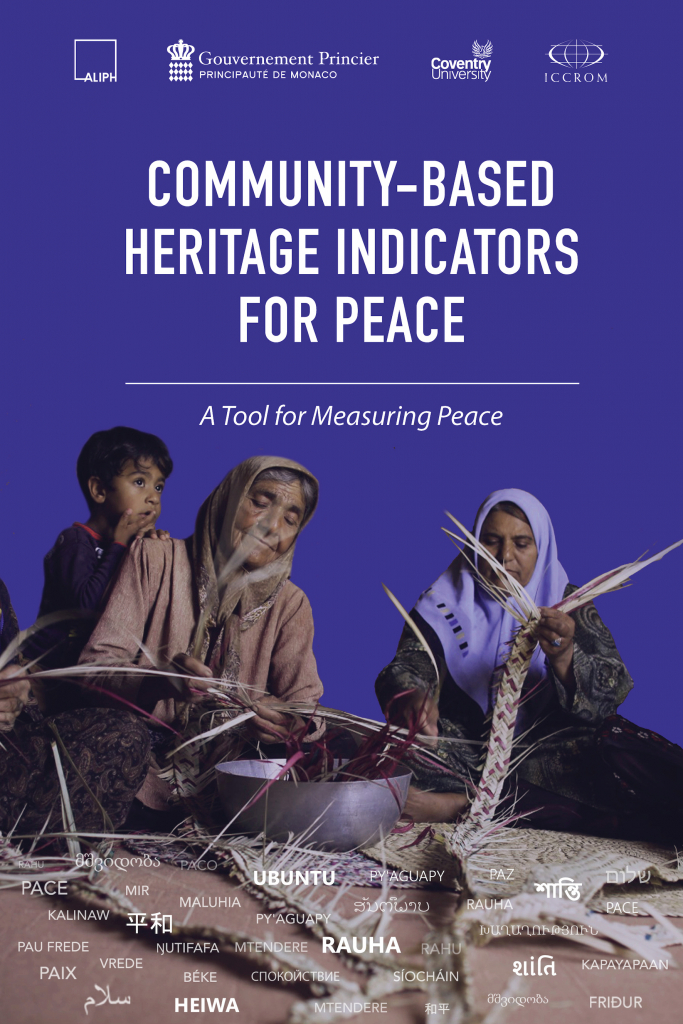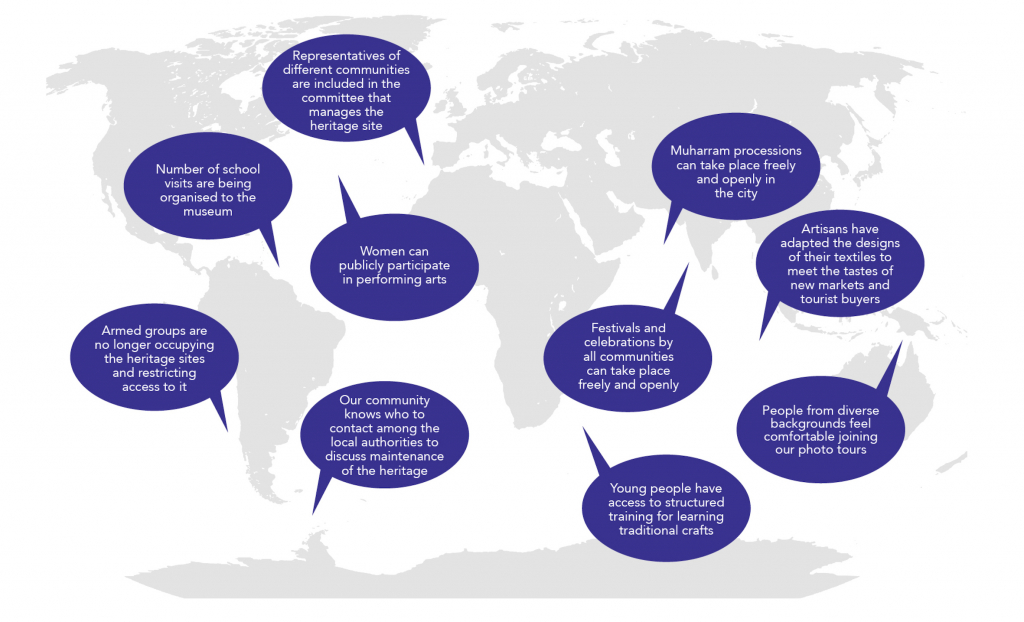 Book cover photo: Takab District, Kerman Province, Iran. Source: Sajad Avarand, 2016
Book cover photo: Takab District, Kerman Province, Iran. Source: Sajad Avarand, 2016“Peace will prevail when life returns to the city.”
– ICCROM workshop on heritage-based peace indicators
Capturing local voices on how they use and regard heritage in situations of peace and conflict is the focus of our newest Tool, Community-Based Heritage Indicators for Peace, developed by ICCROM’s First Aid and Resilience for Cultural Heritage in Times of Crises (FAR) Programme. This new resource outlines a step-by-step method for engaging local communities in defining heritage indicators that can help measure peace and social change in conflict-affected settings.
Recent incidents involving the intentional destruction of heritage have underscored that peace and conflict are culturally situated. Many cultures have developed their own nuanced understanding of what lasting peace looks and feels like on-the-ground. However, when high-level peace agreements are drawn, the metrics defined for signalling a return to peace rarely include concerns for culture and heritage.
The lack of heritage-based metrics for peace has also placed professionals on-the-ground in a difficult position. They bear a heavy responsibility to ensure that their interventions, aimed at heritage safeguarding, ‘do no harm’ and support peace, but they lack tools and guidance on how to do this.
Community-Based Heritage Indicators for Peace aims to address this gap. It will help individuals and institutions engaged in humanitarian aid, peacebuilding and heritage protection enhance and monitor peacebuilding outcomes of heritage projects in diverse, conflict-affected settings.
Adapted from the Everyday Peace Indicators project, led by Dr Pamina Firchow and Prof Roger Mac Ginty, the Community-based Heritage Indicators for Peace was conceived through a participatory workshop involving 17 heritage practitioners, researchers, as well as humanitarian and development aid professionals from 12 countries.
The resulting Tool emphasizes a ‘bottom-up,’ community-centred approach for heritage-based peacebuilding. This approach highlights the types and expressions of heritage that matter most to conflict-affected people and, by extension, those that could have the greatest role to play in restoring dignity, hope and peace to communities suffering from the impact of violence.
Community and local voices can be difficult to hear, and that is why bottom-up and participatory methodologies are important tools for any pro-social or pro-peace initiative. The ICCROM Guide developed here is an excellent example of how local voices can be encouraged and heard.
- Prof Roger Mac Ginty, Durham University, and Dr Pamina Firchow, Brandeis University - Leaders of the Everyday Peace Indicators Project
Co-creation
Community-based Heritage Indicators for Peace is a sequel to PATH - Peacebuilding Assessment Tool for Heritage Recovery and Rehabilitation, which supported the design and implementation of conflict-sensitive heritage interventions.
This new Tool enables users to go a step further and identify ways heritage can be used to measure everyday peace in a given context. The research and production of the Tool is generously supported by the Government of the Principality of Monaco and is backed by the Aliph Foundation through the Alliance for Cultural First Aid, Peace and Resilience – a cascading capacity-development project conceived in collaboration with FAR-ICCROM.
The contributing team includes – Dr Elly Harowell, Assistant Professor, Centre for Trust, Peace and Social Relations, Coventry University, United Kingdom; and the team from ICCROM-FAR, including Aparna Tandon, Senior Programme Leader; Mohona Chakraburtty, Programme Assistant; and Anisha Patel, Consultant.
The ICCROM-FAR team extends its thanks to those who field-tested this Tool and provided case examples, including Fares Al-Towaity, Founder and Chief Executive Officer, YKRB Foundation for Heritage, Culture and Development, Yemen; Nathalie Paarlberg, Chief Operating Officer, Turquoise Mountain Trust; and Sehadin Shok, Chief Technical Advisor, Cultural Heritage as a Driver for Intercommunity Dialogue and Social Cohesion Project, United Nations Development Programme (UNDP), Kosovo.
ICCROM-FAR is grateful to the Project’s expert group for their guidance and feedback in developing the methodology for Community-based Heritage Indicators for Peace. In particular, we would like to thank Ms Alexandra Fiebig, Project Manager, Aliph Foundation; Dr Amra Hadzimuhamedovic, Director, Center for Cultural Heritage, International Forum Bosnia; Ms Anna Sidorenko, Head of Unit, Cultural Heritage Protection Treaties Unit, UNESCO; Mr Vassile Rotaru, Head of Sector, Methodology of the Integrated Approach, Integrated Approach for Security and Peace Directorate, European External Action Service; and Dr Zeynep Gul Unal, President, ICOMOS-ICORP.
“Our larger goal is to place communities at the centre of heritage-based peacebuilding and help design, as well as implement projects that go beyond restoring physical heritage to reinstate and sustain peace.”
- Aparna Tandon and Dr Elly Harrowell, authors, Community-based Heritage Indicators for Peace
Authors: Dr Elly Harrowell and Aparna Tandon
How to cite: Harrowell, E. and Tandon, A. 2022. Community-based Heritage Indicators for Peace – A Tool for Measuring Peace. Rome, ICCROM.
Coming soon in Arabic

